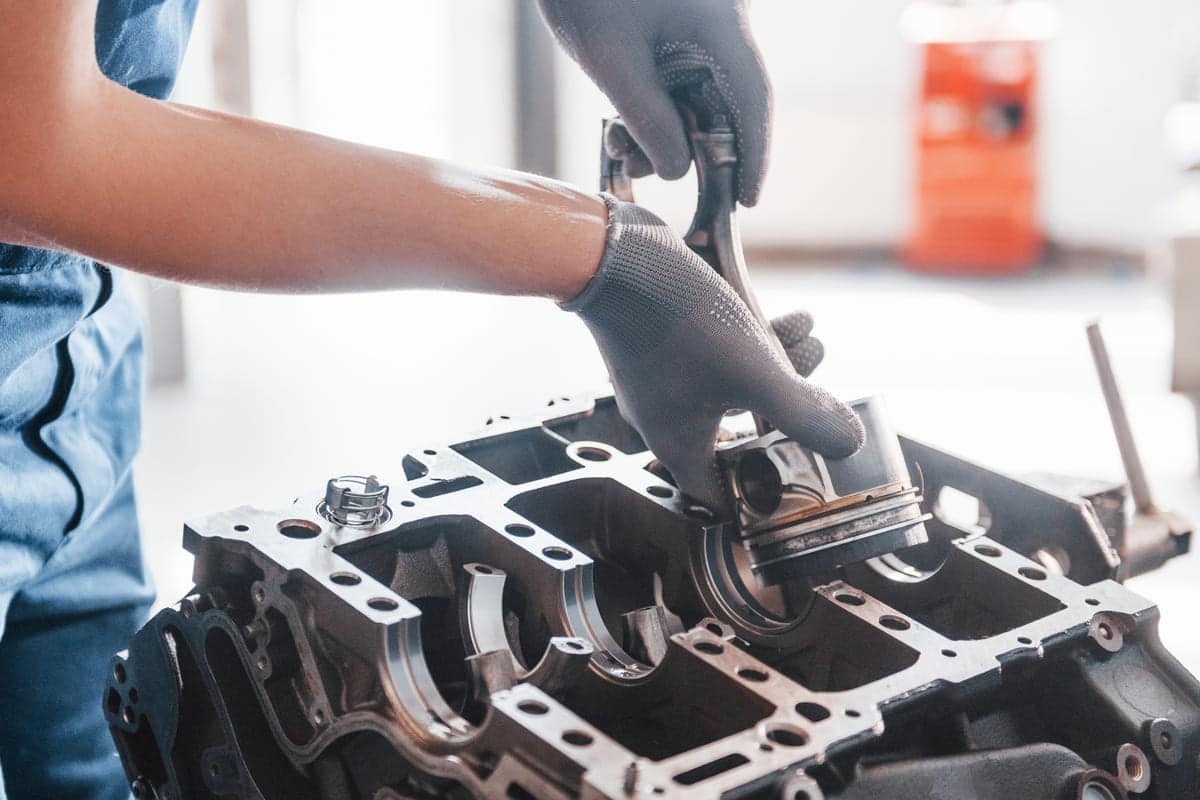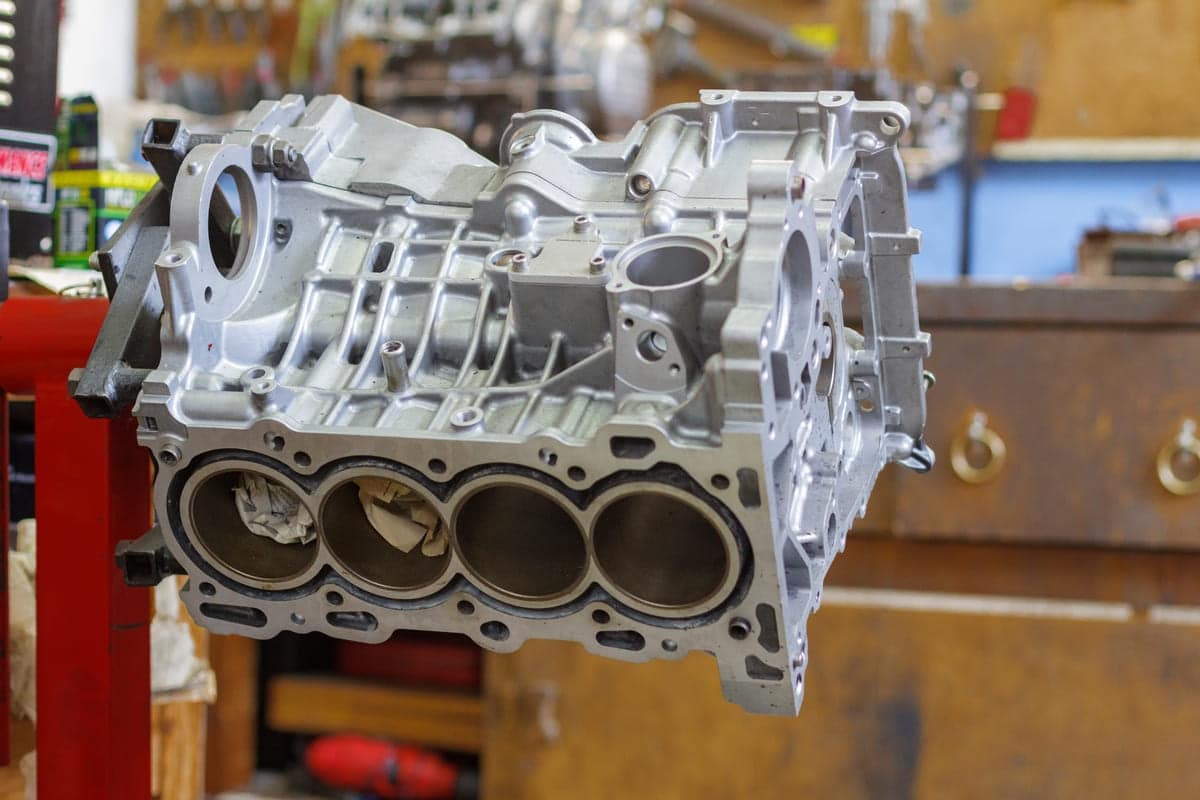Engine blocks are designed to withstand various temperatures and mechanical stresses, to be durable and to be lubricated. Within these blocks there are multiple oil galleries to circulate the oil. And water galleries to regulate the temperature and to keep everything in optimal conditions.
What is an Engine Block?
An engine block also known as cylinder block, is a part of the car engine. It contains the cylinders where the fuel burns to produce power. The engine block has passages for oil and coolant to keep the engine cool and lubricated. Engineers make engine blocks from strong materials like iron or aluminum.
This helps them to withstand high pressures and temperatures. Inside the block, the pistons move up and down in the cylinders. This is what powers the car. Knowing the engine block helps us to understand how cars work and to be efficient.
References
- Block Engine. Britannica. Retrieved from
- Cylinder block. Wikipedia. Retrieved from
What are the Major Parts of the Cylinder Block?
The cylinder block has several parts that are important. Here are the main components of the engine block:
- Cylinders: These are hollow tubes where the pistons move up and down. Fuel burns here to produce power for the engine.
- Pistons: These fit inside the cylinders. They move up and down to convert fuel into motion.
- Crankshaft: At the bottom it converts the pistons up and down motion into a circular motion to drive the car.
- Oil Galleries: These channels allow the oil to flow through the engine to reduce friction and wear on the moving parts.
- Water Galleries: These passages let the coolant to flow around the engine to prevent it from overheating.
- Cylinder Head: This sits on top of the cylinder block and contains the valves and spark plugs to control the fuel and air flow.
References
- What is Engine Block?. Testbook. Retrieved from

What are the Types of Cylinder Block?
There are different types of engine blocks used in car engines. Each type has its own design and function. These designs fit different vehicles and offer various levels of power and efficiency.
- Inline Cylinder Block: This type has all the cylinders in a single line. It’s simple and compact, used in small cars and motorcycles.
- V-Type Cylinder Block: In this type the cylinders are set in two banks at an angle, forming a “V” shape. It produces more power and is used in bigger cars and trucks.
- Flat Cylinder Block: Also known as boxer engine, this type has the cylinders arranged horizontally. The opposing pistons move towards and away from each other. It has low center of gravity and smooth operation.
- W-Type Cylinder Block: This type has three or four cylinder banks in a “W” shape. It’s used in high performance vehicles for more power and smooth operation.
What are the Functions of the Cylinder Block?
The engine block is the heart of the engine. It contains many important parts and makes everything work together:
Piston, Connecting Rod and Crankshaft Housing
The engine block holds the , connecting rod and crankshaft. This creates a safe space for these parts to move and work together.
Components Support
The engine block supports various engine components. It holds the A/C compressor, , intake manifold and exhaust manifold. These parts are bolted to the block.
Housing for Lubrication System Components
The engine block contains the lubrication system components. It has the oil pan, oil pump and . These are the essential parts to keep the engine lubricated.
Important in Engine Cooling
The engine block regulates the engine temperature. It’s part of the cooling system, allows the coolant to flow through and remove the excess heat. This prevents the engine from overheating.
References
- Cylinder Blocks. ScienceDirect. Retrieved from
What are the Materials Used to Make Cylinder Blocks?
Engine blocks are made of different materials. These materials must be strong and durable to withstand high pressure and heat. Knowing these materials will help us understand why engines work well.
- Cast Iron: Cast iron is very strong and can withstand high temperatures. It’s also resistant to wear and tear. Many older engines use cast iron for their engine block.
- Aluminum Alloy: Aluminum alloy is light and strong. It reduces the overall weight of the car which improves fuel efficiency. Many modern engines use aluminum alloy for their engine block.
- Compacted Graphite Iron (CGI): CGI is stronger than regular cast iron but lighter. It offers better strength and durability. Some high-performance engines use CGI for their engine block.
- Magnesium Alloy: Magnesium alloy is even lighter than aluminum. It offers good strength but is more expensive. High-end vehicles may use magnesium alloy for their engine block.
References
- The material of an engine block is. Testbook. Retrieved from
- Engine block materials. Wikipedia. Retrieved from https://en.wikipedia.org/wiki/Engine_block#Materials


